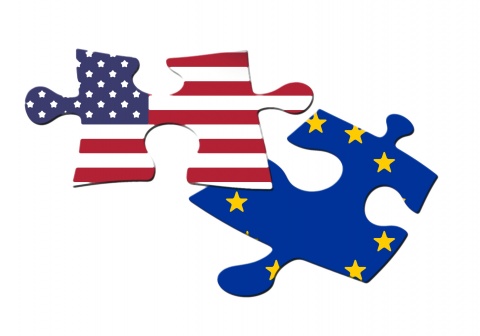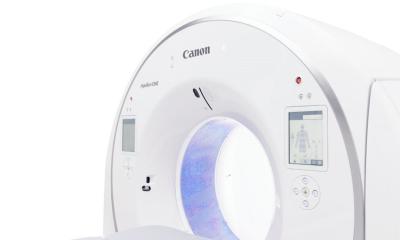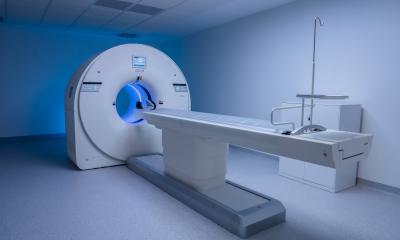Article • EU v. USA – a comparison
Used imaging equipment
I’ve watched the used imaging equipment market for the last 40 years and it seems like every year, at ECR, I have a conversation with friends comparing the USA and EU markets. Clearly, the market is more developed in North America than it is in Western Europe. Why?
Report: Phillip F Jacobus
Let’s look at the numbers

I think it’s fair to say that DOTmed.com, a company that I started in my apartment almost 20 years ago, is one of the most important medical equipment/parts/service websites on the internet. People made fun of me because our website was free, but it proved to be a good strategy. Today, out of over 274,521 registered users there are 25,975 used equipment dealers. 18,442 are in the USA and 2,640 are in the EU, with another 881 in non-EU, European countries. There are 17,350 service companies in the US, with only 2,806 in the EU.
As far as postings of parts or equipment for sale, there are 119,220 total equipment listings with 103,994 in North America and 10,085 in Europe. There are 677,545 total part listings with 369,551 in North America and 83,159 in the EU. So, if your instinct tells you that the market for used imaging equipment is bigger in the US than in the EU, then you’re probably right.
Why?

There’s that old conundrum... Which came first, the chicken or the egg? In the US we have a healthy pre-owned equipment industry because we have a healthy independent service industry, and we have a healthy independent service industry because we have a healthy independent spare parts industry. All of this is motivated by financial pressure. In the US there’s pressure on healthcare providers to do more with less for more patients. This has carried over to in-house departments, where hospitals provide their own maintenance.
It’s been said that money makes the world go round and hospitals not only found a way to lower their operating costs by servicing the equipment themselves, but now in the US there are alternative parts vendors that help these hospitals. In fact, some of these alternative parts vendors are shipping equipment to Europe and will continue to do so until the independent parts industry in the EU grows big enough to meet demands.
In my opinion, it’s all a question of priorities. Europe enjoys a better rail infrastructure than North America because the governments in Europe have made it a priority. Healthcare is also a priority in Europe, even at the cost of higher taxes in some cases. In the US, healthcare is a political football whereas in Europe it seems to be an inalienable right. Or, to put it another way, healthcare providers in Europe are not under the gun to find ways to save and economise to the same extent as they are in the United States. There is an abundance of trained service labour available in the USA. Coupled with an entrepreneurial spirit, this labour has formed ISOs to offer lower cost quality alternative service to the OEM prices. Then add a robust spare parts market and you have strong alternative service options.
Will this change?
It’s my prediction that, just like in the USA, the EU market will have a place for OEM service, in-house service and independent service.
Philip F Jacobus
There are more people alive today in the world than there were 100 years ago and we have succeeded in making people live longer. It seems to me that it’s only a matter of time before this larger population places financial pressure on European healthcare providers and they are forced to look for ways to save money. The pre-owned equipment market will be that answer, I predict.
As the rest of the world continues to grow, the need for pre-owned equipment and perhaps more importantly, pre-owned parts, will grow as well. The market in Europe will have to develop some independent engineering groups to dismantle equipment and harvest parts without missing a step. Some of these engineering groups will be asked to provide maintenance. First, they’ll be asked to provide maintenance in a pinch, and then in the future, they’ll probably be called upon for regular maintenance.
It’s my prediction that, just like in the USA, the EU market will have a place for OEM service, in-house service and independent service. It’s only a matter of time. In the meantime, just a few companies are going to be big winners, as they dominate that space.
DOTmed.com is at ECR
Expo Hall X2, Stand 203
Profile:
The President and Founder of DOTmed.com, Inc., Philip F Jacobus publishes HealthCare Business News magazine and HealthCare Business News online. He is also President of Owen Kane Holdings, Inc. and its subsidiaries. Jacobus was a used equipment dealer (1977-1996) and pioneered the exporting these goods to China, visiting that country 70 times. He has also sold equipment in over 30 countries. A business partner/investor in more than 90 imaging centres, he was instrumental in installing the first proton therapy system in Russia.
27.02.2018










